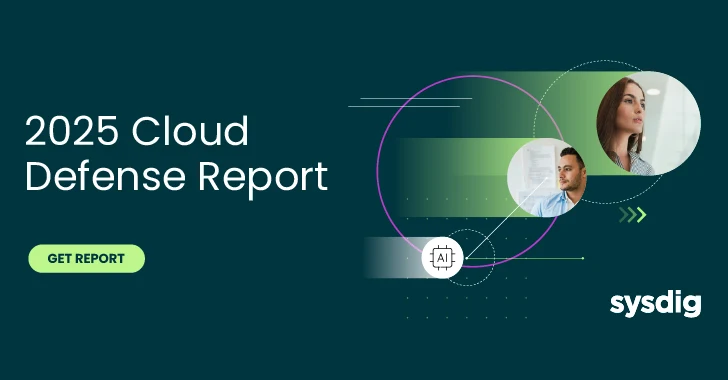
The AI-Powered Security Shift: What 2025 Is Teaching Us About Cloud Defense
The year 2025 has arrived, and with it, a stark reality check for cloud security. No longer a theoretical threat, AI-powered attacks are here, evolving at breakneck speed. This isn’t just about faster exploits; it’s about a fundamental shift in the landscape where artificial intelligence serves as both the sharpest weapon and the strongest shield. As enterprises aggressively embed AI into every facet of their operations, security teams are grappling with a complex, three-pronged challenge that demands immediate and intelligent adaptation.
The Triple Burden: Securing the AI-Augmented Enterprise
The rapid integration of AI across business functions, from supply chain optimization to customer service, has introduced unprecedented security complexities. Cybersecurity teams now find themselves navigating a critical triple burden:
- Securing AI Embedded in Every Part of the Business: AI models, their training data, and the platforms they run on present new attack surfaces. Protecting proprietary algorithms from intellectual property theft, safeguarding sensitive data used for training, and preventing model manipulation (e.g., adversarial attacks) are paramount. A compromise here could lead to devastating data breaches or system failures.
- Using AI to Defend Faster and Smarter: The sheer volume and velocity of modern threats necessitate automated, AI-driven defense mechanisms. AI can analyze vast datasets to identify anomalous behavior, predict emerging threats, and automate response actions in milliseconds, far exceeding human capabilities. This proactive and reactive power is crucial for maintaining a strong security posture.
- Fighting AI-Powered Threats That Execute in Minutes—or Seconds: Malicious actors are equally adept at leveraging AI. AI-driven malware can rapidly adapt to defenses, generate sophisticated phishing campaigns, or execute complex multi-stage attacks with alarming speed. Traditional, human-centric response times are often insufficient against such agility, highlighting the need for AI-augmented defense.
The Evolving Threat Landscape: AI as an Offensive Weapon
The adversarial use of AI is no longer a futuristic concept; it’s a current reality. These aren’t just faster brute-force attacks; they are intelligent, adaptive, and highly effective:
- Automated Vulnerability Exploitation: AI can rapidly scan for and exploit vulnerabilities. For instance, an AI-powered system could identify a misconfiguration in a cloud environment (e.g., an S3 bucket with improper permissions) and automatically exfiltrate data before human defenders even detect the scanning activity. While not a specific CVE, misconfigurations are a constant threat, often leading to data exposure, as seen in various breaches.
- Advanced Phishing and Social Engineering: AI-generated deepfakes and highly personalized phishing emails, crafted with contextually relevant information gathered by AI, make it incredibly difficult for users to distinguish legitimate communications from malicious ones. This directly impacts the human security layer, often leading to successful credential compromise or malware delivery.
- Polymorphic Malware and Evasion Techniques: AI enables malware to dynamically alter its code and behavior, evading signature-based detection systems. This adaptability makes traditional antivirus and intrusion detection systems less effective, demanding behavioral analysis and AI-driven anomaly detection.
Remediation Actions: Fortifying Cloud Defenses with AI
To counter these AI-powered threats and manage the triple burden, organizations must strategically adopt and strengthen their AI-powered security:
- Implement AI-Powered Threat Detection and Response (XDR/SIEM): Leverage AI-driven Extended Detection and Response (XDR) or Security Information and Event Management (SIEM) solutions. These platforms can ingest data from diverse sources (endpoints, networks, cloud environments) and use AI to identify subtle indicators of compromise, correlate events, and prioritize alerts. This reduces alert fatigue and enables faster, more informed responses.
- Automate Incident Response Workflows: Integrate playbooks with Security Orchestration, Automation, and Response (SOAR) platforms. AI can automate initial triage, containment, and even some remediation steps for common incidents, freeing up security analysts for more complex investigations.
- Secure the AI Supply Chain: Just as software supply chains need securing, so too do AI model supply chains. This involves verifying the integrity of training data, monitoring models for drift or malicious manipulation, and implementing robust access controls for AI development and deployment environments.
- Regularly Audit and Pen-Test AI Systems: Conduct specific security audits and penetration tests focused on AI models and their infrastructure. This includes testing for adversarial attacks (e.g., data poisoning, model evasion) and ensuring proper authentication and authorization around AI APIs and data pipelines.
- Enhance Cloud Security Posture Management (CSPM) with AI: Deploy AI-enabled CSPM tools to continuously monitor cloud environments for misconfigurations, compliance deviations, and security vulnerabilities. AI can quickly identify risky configurations, such as public S3 buckets or overly permissive IAM roles, before they can be exploited.
- Employee Training and Awareness (AI-Enhanced): While AI is a weapon, humans remain a critical vector. Training should include examples of AI-generated phishing and deepfakes to help employees identify sophisticated social engineering attempts. AI can also personalize training modules based on individual risk profiles.
Conclusion: The Inescapable AI Crossroads
The year 2025 underscores a fundamental truth in cloud security: AI is no longer an optional add-on; it is central to both offensive and defensive strategies. Security teams are at a critical crossroads, tasked with the immense responsibility of securing nascent AI technologies, harnessing AI’s power for defense, and simultaneously battling against AI-fueled adversaries. Success in this new era hinges on a proactive, AI-informed approach—one that rapidly adapts to evolving threats, automates defenses, and recognizes that the future of cloud security is inextricably linked with the intelligent use of artificial intelligence.





